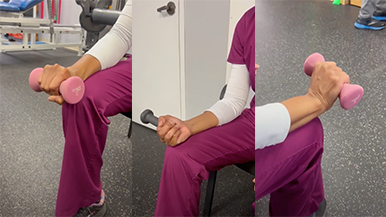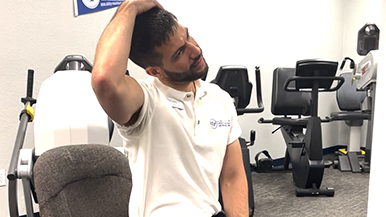What to Expect on Your First Visit with a Pelvic Physical Therapist
You have been recommended to a Pelvic Physical Therapist by your physician. What happens next?

You might be wondering how this will address your problems and worries. You also might be curious about “how this works.” What to expect from the initial appointment and follow up treatments. You may be experiencing nervousness or anxiety. You might ask if we handle men and women equally. It could seem like you have a thousand questions. Well, you’re not alone! We hope that some of your worries and inquiries may be answered by this.
For more than 25 years, pelvic physical therapy has been practiced. If you’ve never heard of it, that’s okay. The majority of people we encounter are unaware of it. The architecture of the pelvis and its surrounding region, including the muscles, joints, nerves, organs, and connective tissue, is specifically studied by pelvic physical therapists to see how it might be affecting your symptoms.
Expectations for your first meeting with a pelvic physical therapist practitioner
In order to have all the required documentation done, please arrive at your appointment 15 minutes in advance as directed.
Please bring:
- Prescription
- ID – Drivers License
- Insurance card
- Any tests and records that you think may be relevant to your concern
- Form of payment
Arriving early to take care of paperwork will prevent cutting into valuable time with your Pelvic Physical Therapist.
- Your pelvic physical therapist will talk about your symptoms and obtain a thorough medical history. For example, you will be asked questions about how often you leak pee, what causes it, whether you wear pads, and other things if you are seeking treatment for urinary incontinence, also known as
 urinary leakage.
urinary leakage. - You’ll learn about the anatomy, connective tissue, muscles, joints, nerves, organs, and ailments that can be causing your symptoms.
- A review of your medical history and symptoms will be conducted. This could involve palpating and observing the abdomen, pelvis, hips, back, and pelvic floor.
- Your therapist is searching for limitations on your range of motion, as well as any pain that may be referred to another site. Is there a limit in the scar or connective tissue, for instance, if you had a C-section? This could be a factor in the incontinence of the urine.
- Your pelvic floor will then be examined internally by your therapist. Ladies, don’t freak out! There is simply a gloved finger involved, not a speculum. The same for you, gentlemen; a single gloved finger.
Given that many of you dislike touching, particularly “down there,” this might seem like a deal breaker. Your physical therapist will not push this on you; instead, they will fully respect your desires.
However, allow me to clarify why this is a crucial portion of the examination. when discomfort that is described as being “deep inside,” such as searing, throbbing, or hurting. Being able to palpate the muscle, connective tissue, or nerve will provide important information about the cause of your symptoms and the most effective way to treat them. For example, you may sense a sensation of heaviness on your pelvic floor due to pelvic organ prolapse (POP).
By palpating the pelvic floor, for instance, your therapist can find that you have trigger points in your muscles that result in painful or ineffective muscular contraction. Additionally, there may be tight connective tissue that restricts blood flow, increases pain sensitivity, and causes hypersensitivity.
Do not hesitate to bring up your worries with your therapist during your initial appointment if this does not soothe your mind. We find it unfortunate that you are prepared to live with your problems and refuse to get assistance from a pelvic physical therapist in order to avoid having a pelvic floor assessment.
- Following the evaluation, your pelvic physical therapist will go over the results and outline the course of your care. Manual treatments including trigger point release, visceral mobilization, scar tissue release, connective tissue release, stretches, exercises, E-stim, or biofeedback may be used in treatment.
- “Homework” will be assigned to you. I hear the sigh already! Only one or two treatments per week are recommended. If you are not altering your daily routine, exercising, stretching, or anything else that is causing your symptoms, your physical therapist will spend an hour undoing a week’s worth of work. For example, if you spend the entire day slouching, your pelvic floor muscle may become taut and unresponsive, making it difficult to regulate your urine incontinence or causing you pain. Sadly, you won’t receive the results you want and your symptoms won’t improve much if you don’t complete your “homework.”
We hope that this has reassured you and provided the answer to your query. Please contact the closest Pelvic Physical Therapy office and request to talk with the Pelvic PT if you have any more questions. She will be happy to respond to your inquiries.



